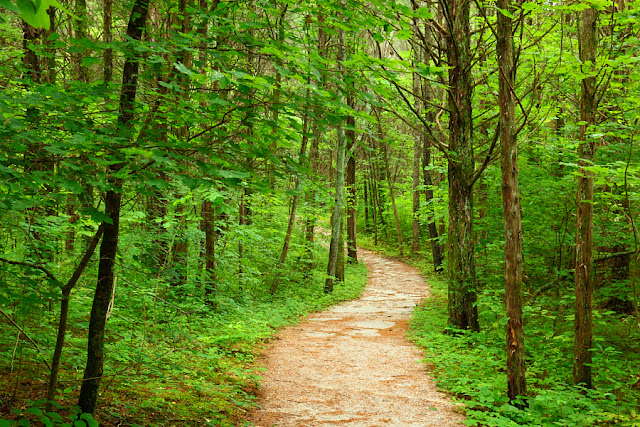 |
| Outcrop, Mammoth Cave National Park, Kentucky © Doug Hickok By the road was this outcrop of limestone, showing telltale traits of Karst topography, a geologic phenomenon important for the formation of caves. Weaker layers of limestone erode faster than harder layers above, creating ideal situations for cave development over time. |





